For Day 16 of the Bread Baker’s Apprentice Challenge, we made Kaiser Rolls. Like several of the other formulas in the book, this version utilizes a Pâte Fermentée to improve flavor, texture, and color. It also utilizes diastatic malt powder to improve coloring.
When I was making the Pâte Fermentée (the day before I baked the bread), my son asked if we had any Kaiser Rolls to make a sandwich. I said, “funny you should ask, I’m making them for the BBA Challenge tomorrow”. He had to wait a day for his rolls, but it was worth it. He likes them.
I decided to use freshly milled organic wheat flour because I ran out of store bought bread flour and it seemed rather silly to go out and buy more when I have a bunch of stored grains. I also used diastatic malt powder made from sprouted wheat grains. The formula calls for diastatic barley malt powder, but I didn’t have any barley grains so I used wheat grains to make the diastatic malt powder. I’m going to try sprouting some barley grains soon. I plan on making these rolls again so I’ll use the barley malt and let you know how it compares to this version.
You might also enjoy these other Roll Recipes.
Kaiser Rolls
Makes: 6 large rolls or 9 smaller rolls (I doubled the recipe)
Ingredients:
- 1 1/2 cups (8 ounces) pâte fermentée
- 2 1/4 cups (10 ounces) unbleached bread flour
- 3/4 teaspoon plus a pinch (.2 ounce) salt
- 1 teaspoon (.17 ounce) diastatic barley malt power
- or 1 1/2 teaspoons (.33 ounce) barley malt syrup
- 1 teaspoon (.11 ounce) instant yeast
- 1 large egg, slightly beaten
- 1 1/2 tablespoons (.75 ounce) vegetable oil
- 10 tablespoons to 3/4 cup (5 to 6 ounces) water, lukewarm
- Poppy or sesame seeds for topping (optional)
- Semolina flour or cornmeal for dusting
Directions:
Using Freshly Milled Flour
Place the rolls, fold side down, on the parchment, mist them lightly with oil, and cover loosely with plastic wrap.
Remove the rolls from the pan and transfer to a cooling rack. Wait at least 30 minutes before serving.
Thanks for joining us this week in the Bread Baker’s Apprentice Challenge. See you next time…
The next bread in the challenge is Lavish Crackers.
Happy Baking!
Cathy
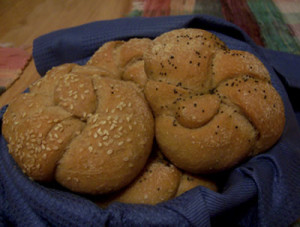
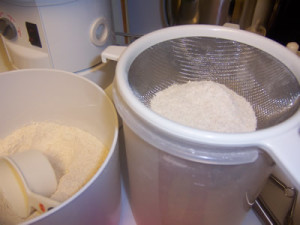
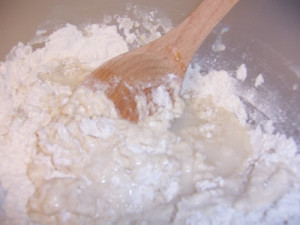
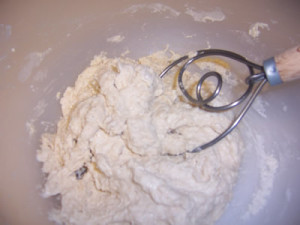

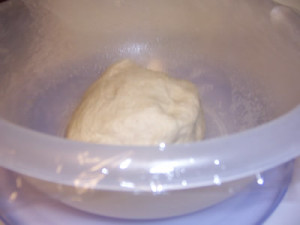
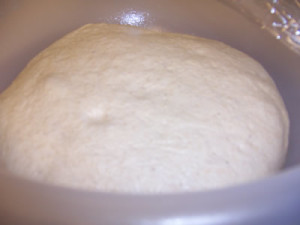
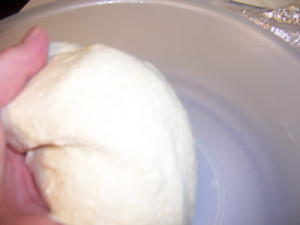
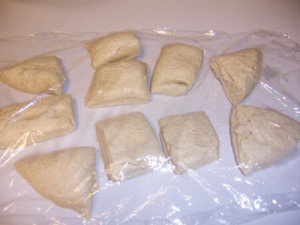
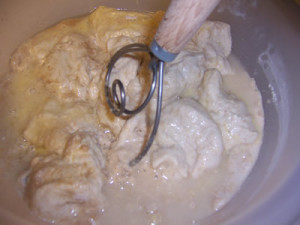
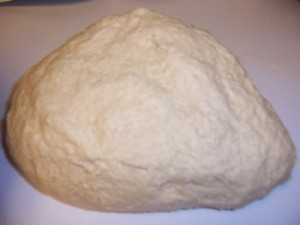
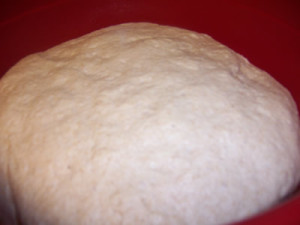
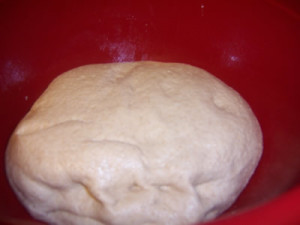
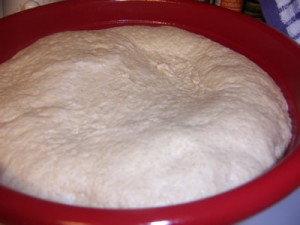
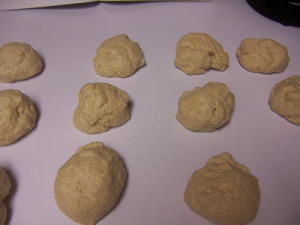
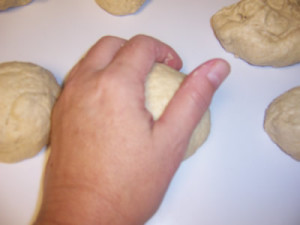
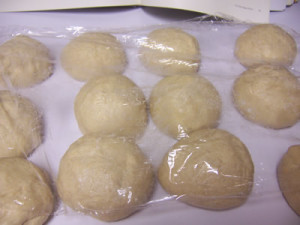
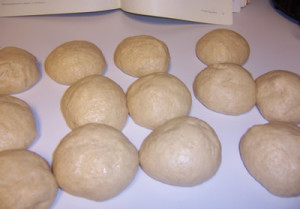
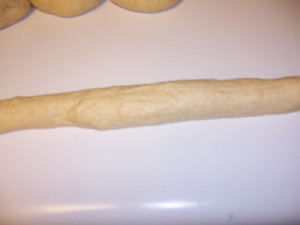
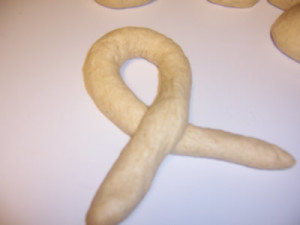
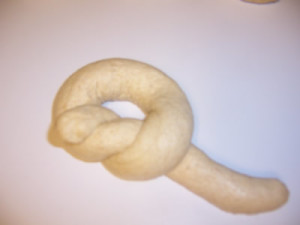
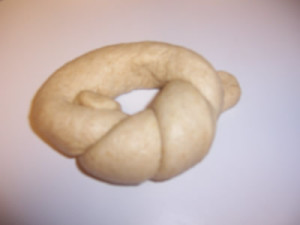
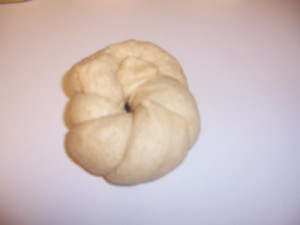
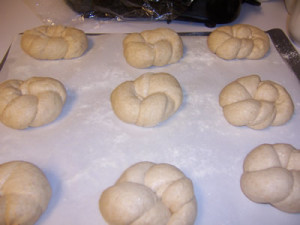
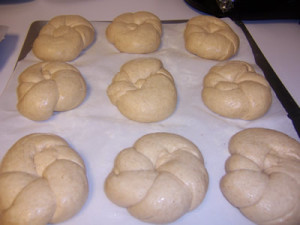
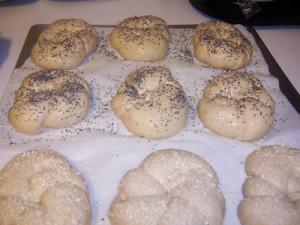
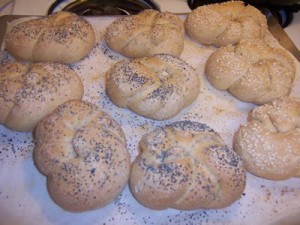
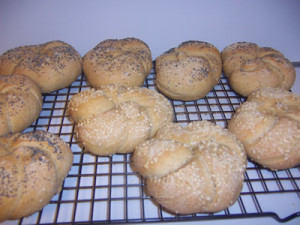
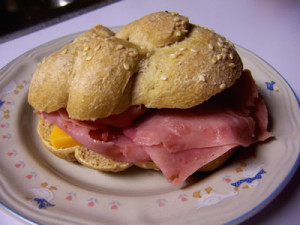
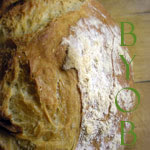
Frieda says
I never knew that you could sift freshly ground wheat flour to separate the bran…I’ve always just added the wet ingredients to half the flour and let it sit (sponge) for up to 30 min. to soften the bran. I’ll have to sift it next time and see if there’s a difference ~ I’m glad you made the wheat rolls. I prefer them over the white AP ones.
Cathy (breadexperience) says
Whenever I use freshly milled flour, I always have to stir it first to mix the bran back in so I thought it might work to sift it out. Commercial bread flour is made by separating the wheat and the bran so why not home milled? This was my first try with this technique so we’ll see how it works for other recipes. I’ll be interested to see if you see a difference as well.
Nicole says
Thanks for all the shaping photos! I’ll be making mine tomorrow or Saturday and I need all the help I can get!
Chris says
Looks Fantastic. I found my version too sticky to shape really well, but after a 2 or 3, they looked a bit better. http://tinyurl.com/n4fhvy
That sandwich looks yummy!